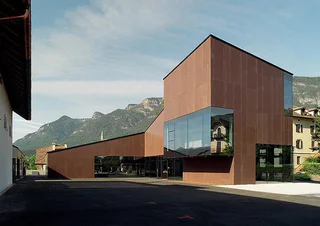
"Schöpferhof" (Stenico house)
Ora/Auer, Auer/Ora, Alto Adige Wine Road
| Poznaj bogactwo kulturowe Południowego Tyrolu. Odwiedź zabytki i muzea, które ukazują fascynującą historię oraz dziedzictwo tego niezwykłego regionu. |

Ora/Auer, Auer/Ora, Alto Adige Wine Road

Missiano/Missian, Eppan an der Weinstaße/Appiano sulla Strada del Vino, Alto Adige Wine Road

Cortaccia s.S.d.V./Kurtatsch, Kurtatsch an der Weinstraße/Cortaccia sulla Strada del Vino, Alto Adige Wine Road

1/4
Pochi/Buchholz, Salorno/Salurn, Alto Adige Wine Road

1/5
Caldaro Paese/Kaltern Dorf, Kaltern an der Weinstraße/Caldaro sulla Strada del Vino, Alto Adige Wine Road

Ora/Auer, Auer/Ora, Alto Adige Wine Road

1/3
Mazzon/Mazon, Neumarkt/Egna, Alto Adige Wine Road

1/2
Settequerce/Siebeneich, Terlan/Terlano, Alto Adige Wine Road

1/4
Pinzano/Pinzon, Montan/Montagna, Alto Adige Wine Road

Egna/Neumarkt, Neumarkt/Egna, Alto Adige Wine Road

Egna/Neumarkt, Neumarkt/Egna, Alto Adige Wine Road

Laghetti/Laag, Salorno/Salurn, Alto Adige Wine Road

1/4
Castelvecchio/Altenburg, Kaltern an der Weinstraße/Caldaro sulla Strada del Vino, Alto Adige Wine Road

1/3
Pinzano/Pinzon, Auer/Ora, Alto Adige Wine Road

1/3
Caldaro Campi al lago/Kalterer Klughammer, Kaltern an der Weinstraße/Caldaro sulla Strada del Vino, Alto Adige Wine Road

1/2
Tramin an der Weinstraße/Termeno sulla Strada del Vino, Alto Adige Wine Road

Ora/Auer, Auer/Ora, Alto Adige Wine Road

1/3
S. Michele/St. Michael - Appiano/Eppan, Eppan an der Weinstaße/Appiano sulla Strada del Vino, Alto Adige Wine Road

Ora/Auer, Auer/Ora, Alto Adige Wine Road

Ora/Auer, Auer/Ora, Alto Adige Wine Road

Laghetti/Laag, Neumarkt/Egna, Alto Adige Wine Road

Salorno/Salurn, Alto Adige Wine Road

Vilpiano/Vilpian, Terlan/Terlano, Alto Adige Wine Road

1/4
Vilpiano/Vilpian, Terlan/Terlano, Alto Adige Wine Road

Cortaccia s.S.d.V./Kurtatsch, Kurtatsch an der Weinstraße/Cortaccia sulla Strada del Vino, Alto Adige Wine Road

Salorno/Salurn, Alto Adige Wine Road

Ora/Auer, Auer/Ora, Alto Adige Wine Road

1/3
Villa di Mezzo/Mitterdorf, Kaltern an der Weinstraße/Caldaro sulla Strada del Vino, Alto Adige Wine Road

1/8
S. Giuseppe al Lago/St. Josef am See, Kaltern an der Weinstraße/Caldaro sulla Strada del Vino, Alto Adige Wine Road

1/3
Mazzon/Mazon, Auer/Ora, Alto Adige Wine Road